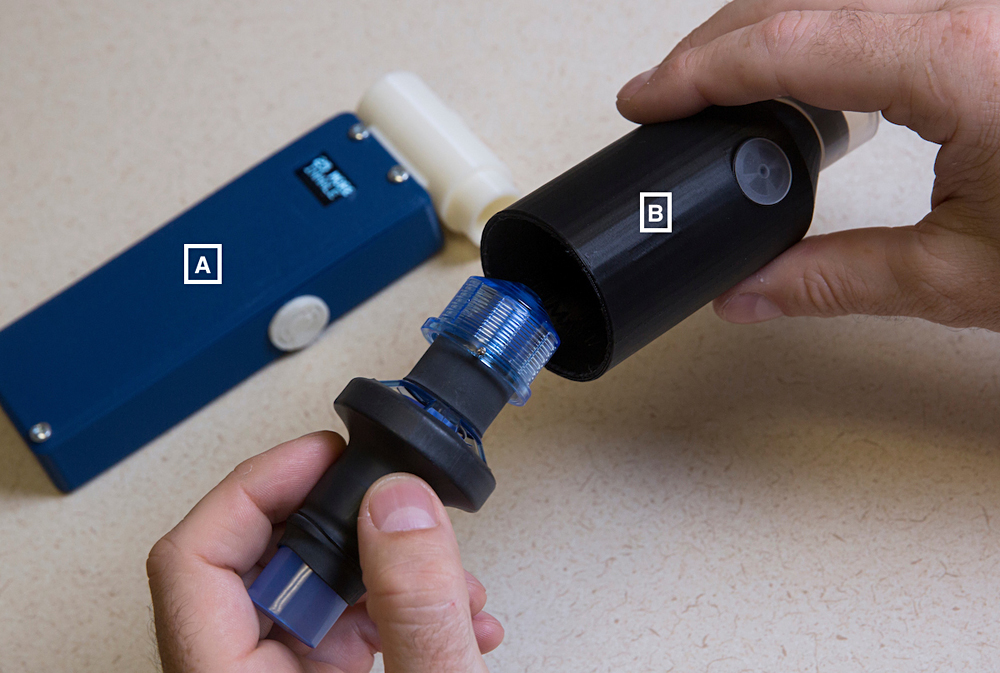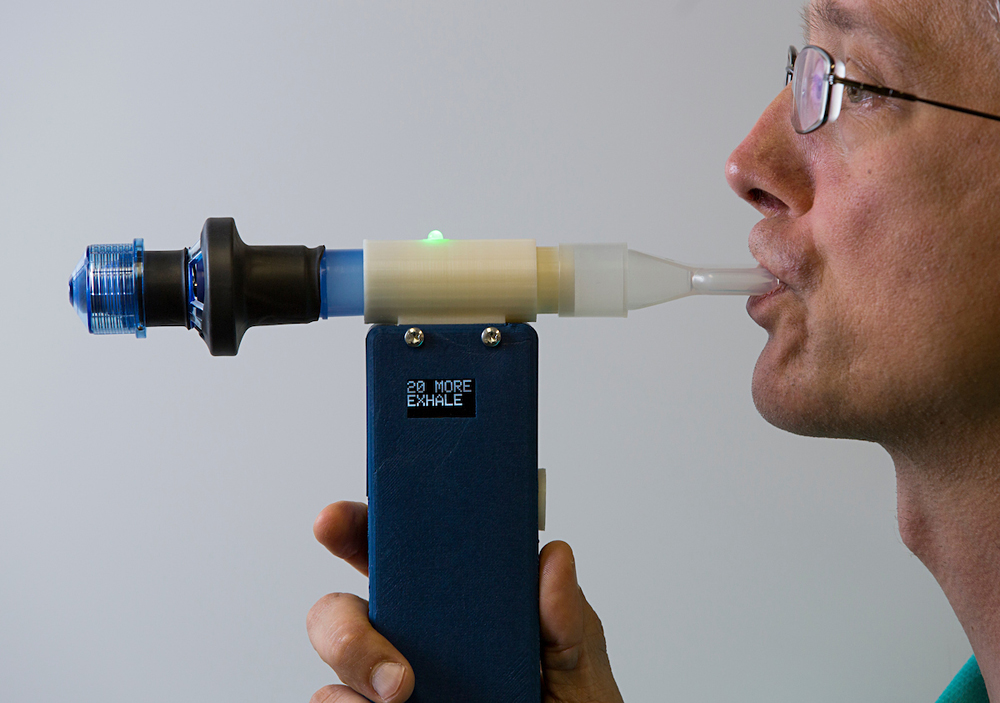New Devices Seek to Improve Respiratory Muscle Training Research

FIGURE 1: RMT device with A) the RMT Monitor and B) The Reverser. Courtesy of Duke Health Photography.
Two new devices with applications in respiratory muscle training (RMT) research and clinical practice have been developed by Duke researchers. The devices have earned provisional patents and are being used at Duke in a clinical trial evaluating the effects of RMT in patients with late-onset Pompe disease.
The first invention, currently known as “The Reverser,” is a custom adapter for use with commercially available RMT devices (Figure 1). Typically, RMT is provided with the use of handheld devices that provide resistance during either inspiration or expiration. The Reverser allows inspiratory-type devices to be used to provide expiratory resistance and vice-versa. The adapter also includes a one-way valve to allow adequate airflow during RMT repetitions.
The researchers' second invention is the “RMT Monitor,” a handheld unit that integrates with commonly used RMT devices to offer enhanced functionality (Figure 1). Features of the monitor include automated data collection, enhanced control over RMT dose and regimen, and delivery of feedback to users about their performance.
Both devices—invented by Harrison Jones, PhD, a professor in Head and Neck Surgery & Communication Sciences with clinical training as a speech-language pathologist, and Matt Brown in Biomedical Engineering—were driven by limitations in the available technology. For example, the pressure-threshold RMT devices that are preferred by researchers and clinicians have gaps in the range of resistance they offer.
“The Reverser allows RMT to be completed across the whole range of human performance,” Jones says. “For example, there are substantial limitations in terms of inspiratory-type RMT devices that offer medium to high resistance. The Reverser allows us to quickly and easily adapt medium to high resistance expiratory-type devices for inspiratory training and expand our training range.”

FIGURE 2: Senior lab administrator Matthew Brown demonstrating the RMT monitor. Courtesy of Duke Health Photography.
The RMT Monitor was developed to address a different problem, Jones says. In his pilot study to assess the effects of RMT in patients with late-onset Pompe disease, participants completed a home-based training regimen and recorded their adherence in a log. However, he soon recognized the need for an automated tool that could collect more precise quantitative adherence data.
In response, Jones and Brown developed an RMT Monitor that provides auditory and visual feedback to help users determine whether an individual RMT repetition has been successful and tracks the number of repetitions remaining (Figure 2). The device also allows improved control over the RMT regimen by allowing the duration and frequency of rest periods between individual repetitions and sets of repetitions to be programmed. In addition, to prevent overtraining, the device has an automatic shutoff feature that is deployed when users have completed their repetitions for the day.
Jones anticipates that, in the future, the 2 devices will have many applications: “These technologies could be used in wide-ranging patient populations including those with pulmonary diseases like chronic obstructive pulmonary disease and pulmonary fibrosis or neuromuscular diseases like ALS and Pompe disease. There is also increasing use of RMT in patients with upper airway disorders, and patients with voice disorders may also benefit. Ultimately, my hope is that these inventions will enhance the use of RMT in both the clinic and the lab.”